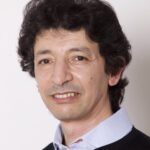Présentation
Blindness and deafness are the two most prevalent sensory impairments, each of which profoundly impact the life of the affected person, whether child or adult. Usher syndrome (USH), the main target of this project, is the most frequent cause of inherited deaf-blindness in humans, with a roughly estimated prevalence of 1/10000. The success of gene therapy in some human retinopathies has raised hope for the development of more specific approaches to treat USH-associated retinal defects. We recently discovered that USH1 vision loss is linked to a subcellular structure that is present in frog, pig and primates photoreceptors but not in those of rodents. As mice cannot reproduce the USH1 retinopathy, we propose the generation of preclinical models for USH1 in large animals, using the CRISPR/Cas9 system. Co-injection of Cas9 mRNA and single guide RNAs targeting the USH1 gene will be used, first in vitro and ex vivo to select the most efficient sgRNA pairs, followed by in vivo experiments. Upon confirmation of the USH1 inactivation, without off-target effects, we will be used to characterize the retinal disease progression, using non-invasive bioimaging (Fundus, OCT), functional (ERG) explorations, molecular and structural (at light and electron microscopy levels) approaches will to establish relevant clinical endpoints for the foreseen preclinical and clinical studies.

